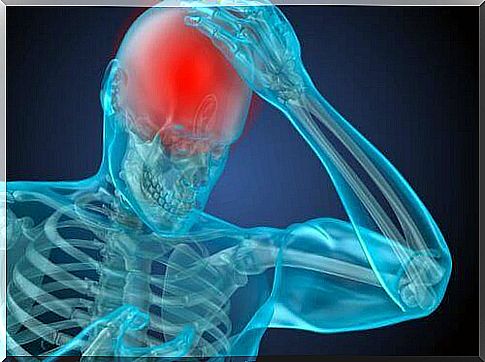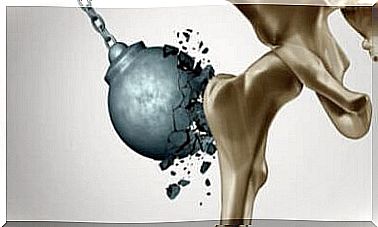What Is A Traumatic Brain Injury?
The main cause of head trauma are traffic accidents and falls.

Traumatic brain injury, as the name suggests, is an injury that affects both the skull and the brain. It can also be functional deterioration, even if there is no visible physical injury.
It can be the consequence of an impact on the skull with another element, whether it is a penetrating object or a weapon. Besides, it can also be due to acceleration and deceleration movements without direct hit.
In developed countries, traumatic brain injury is the third leading cause of death. Indeed, it is the leading cause of death and disability in adults under 45. It is triggered most of the time by traffic accidents, falls and fights.
The risk is greater in young men because it is associated with the abuse of toxic substances, such as alcohol or exciting drugs. In this article, we discuss the causes as well as the main symptoms of traumatic brain injury.
What are the main causes and symptoms?
In order to be able to define a traumatic brain injury, an external force must cause a certain brain dysfunction. This is a disorder that presents two peaks of incidence:
- In young people: trauma usually occurs as a result of traffic accidents or assaults. Other causes are accidents at work or sports.
- Adults over 65: the main cause is falls.
Symptoms mainly depend on the intensity of the impact. They can appear instantly, or take days or weeks to appear.

Mild cranio-encephalic trauma
After a light stroke, symptoms may be nonexistent. However, the most important are often some dizziness, disorientation and amnesia. Likewise, the person may lose consciousness for a few seconds or minutes. She usually has a headache, experiences nausea or vomiting, and tremendous fatigue.
Other symptoms can also be:
- Difficulty sleeping or sleeping more than usual.
- Dizziness or loss of balance.
- Blurred vision or ringing in the ears.
Moderate or severe trauma
In these cases, the same symptoms occur, but can be particularly complicated. Indeed, the loss of consciousness is generally more severe, the headache is constant and the vomiting is more frequent. In addition, there are often seizures, pupil affectation and loss of coordination.
Moreover, the disorientation is much more important. It is important to know that a severe traumatic brain injury can cause a person to go into a coma.
What are the lesions of a cranioencephalic trauma?
Head injuries can cause a wide variety of injuries. First of all, they can be open or closed lesions, depending on whether or not they affect the scalp.
Fractures of the bones of the skull can occur, but it should be noted that the absence of a cranial fracture does not exclude a brain injury. Usually, when there are fractures, some very visible signs such as raccoon eyes and bleeding in the ear or nose appear.
On the other hand, intracranial hemorrhages can occur. They can be intracerebral or take place in the epidural or subdural space. All of them can cause very serious neurological damage. This can result in paralysis, paresis, speech changes, etc.
Sometimes traumatic brain injury results in diffuse axonal damage in neurons in the brain. They occur through a mechanism of acceleration and deceleration. They generally have more complex and irreparable consequences than bleeding.

Treatment of traumatic brain injury
Treatment depends on the severity of the injury. If it is mild, treatment is usually limited to rest, observation, and pain relievers. When it is more severe, the most important thing is to maintain the blood pressure and adequate ventilation of the person.
Severe cases should be treated in a hospital. Additional tests, such as a scanner, will be carried out to locate any lesions. In addition, drugs are given to reduce intracranial pressure or prevent seizures.
In some cases, surgery may be necessary to remove bruises, stop bleeding, or repair fractures.
Conclusion…
It is essential to take safety measures to protect yourself from a possible blow to the head. The main measure should be to drive safely, avoiding drinking alcohol or using drugs before getting behind the wheel. Likewise, it is preferable to wear a helmet, both on bikes and on motorbikes. As well as correctly fastening the seat belt.
Finally, following any blow to the head, it is strongly recommended to consult a doctor. He will then be able to carry out the appropriate examinations and check that all is well.









